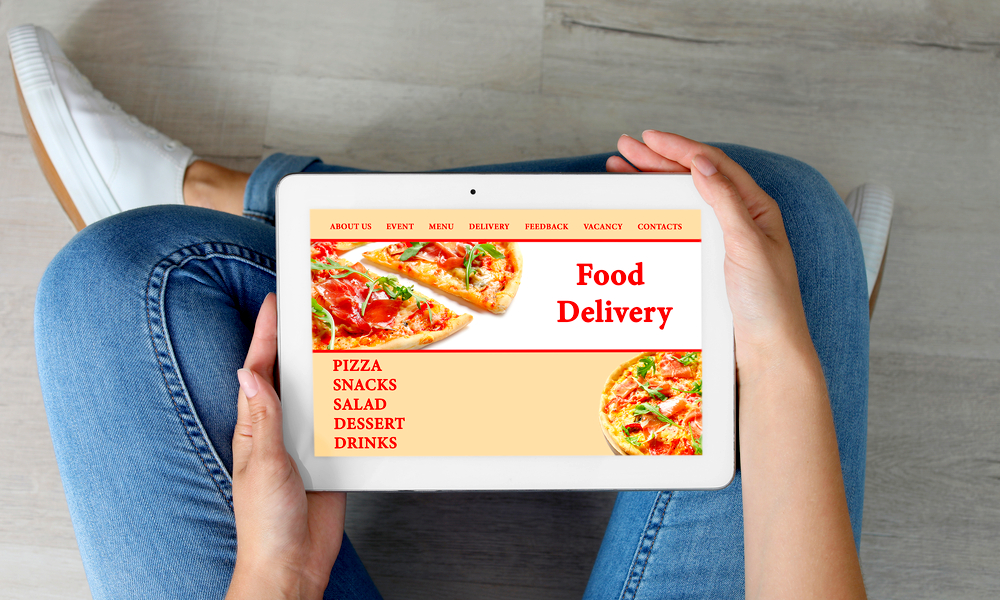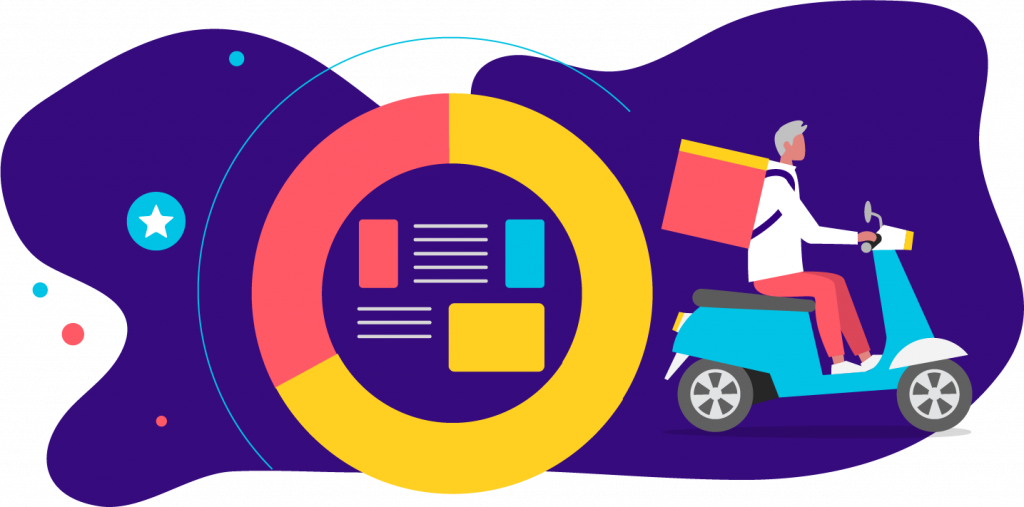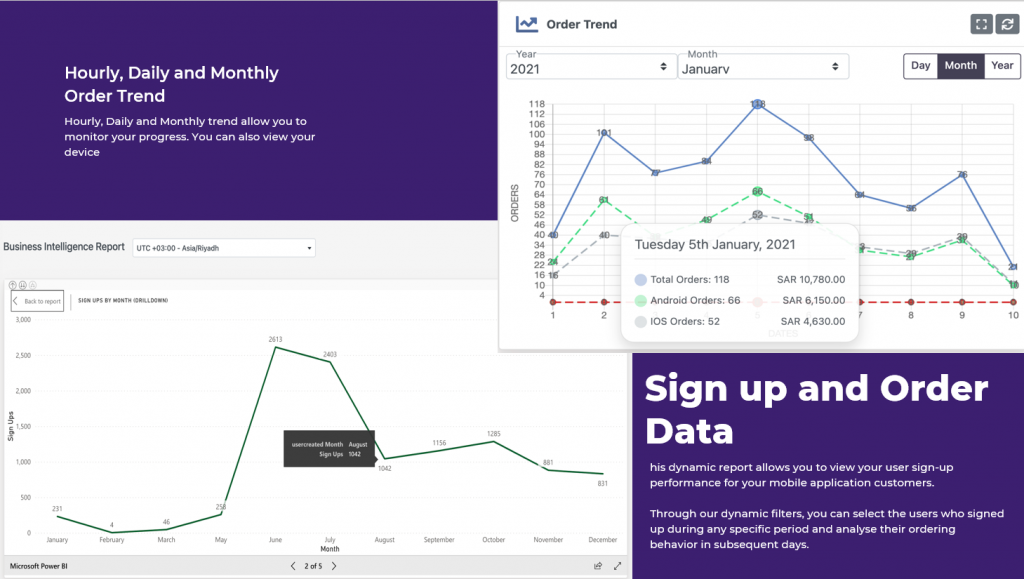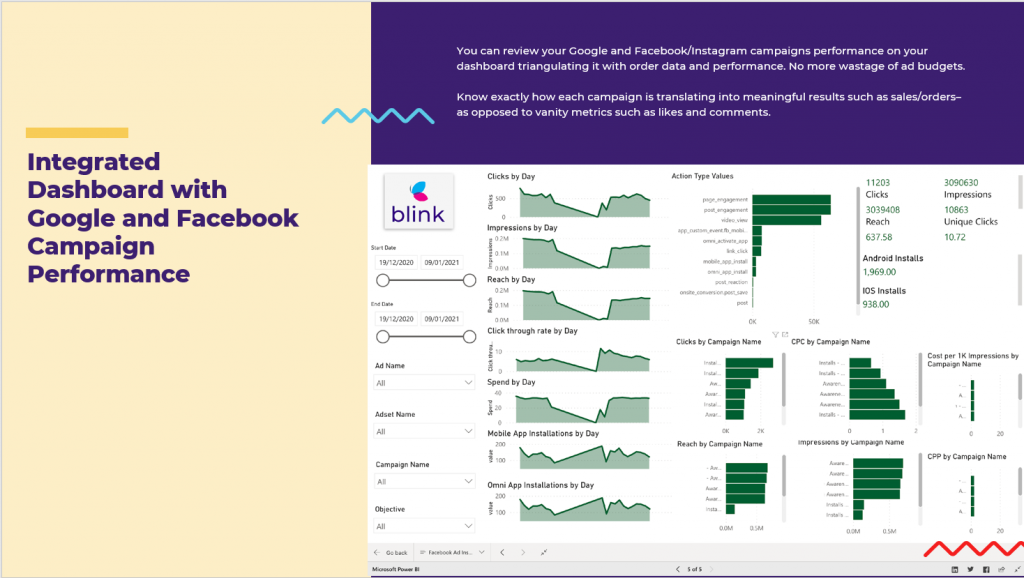Although the tech landscape for restaurants looking to do business online, looks promising, the real money lies in in-house sales. Essentially that translates to mastering the art of converting third-party customers to direct ordering clients. This post sums up some of the best ways of diverting your 3rd party food ordering clients to your native food ordering website.
Read on…
What are third-party customers, and what is third-party customer service?
Third-party customers are those who make use of third-party platforms such as Foodpanda, Just Eat or GrubHub to place their food orders. Third-party platforms typically charge a commission for their service, which is why some restaurants prefer to encourage their customers to order directly through the restaurant’s own app or website.
Third-party customer service refers to the support these third-party platforms offer their users. It can include help with placing orders, tracking orders, and dealing with any issues that may arise.
Why should you convert third-party customers to direct ordering?
There are a few reasons why you might want to encourage your third-party customers to switch to ordering directly through your restaurant’s own app or website.
– You’ll save on third-party commissions:
As mentioned, third-party platforms typically charge a commission for their services. You can avoid this commission by encouraging your customers to order directly through your own app or website.
– You’ll have more control over the ordering process:
When customers order through a third-party platform, you’re essentially handing over some control of the ordering process to that platform. It can be challenging to provide a truly personalized and seamless ordering experience. By contrast, when customers order directly through your app or website, you control the ordering experience from start to finish. It allows you to ensure that your customers have a positive ordering experience.
– You’ll be able to collect data directly:
Another benefit of having customers order through your app or website is that you’ll be able to collect data directly from them. This data can be precious in understanding your customers’ needs and preferences and improving your overall marketing and operations.
How to convert third-party customers to direct ordering?
There are a few things you can do to encourage your third-party customers to switch to ordering directly through your restaurant’s own app or website.
– Make it easy for them to find your app or website:
The first step is ensuring that your app or website is easy for third-party customers to see. Make sure it’s prominently present on your third-party platform profiles and that it’s easy to search for online.
– Offer incentives:
Another way to encourage third-party customers to switch to ordering directly from you is to offer incentives. It could include things like discounts, free freebies, or exclusive offers.
– Provide excellent customer service:
Providing excellent customer service is essential for businesses to retain customers and attract new ones. Local phone numbers are one important way businesses can provide excellent customer service. They allow businesses to have a local presence in multiple markets and to connect with customers in a more personal way. For example, NYC phone numbers allow your customers in New York City to reach you without incurring long-distance charges. This is just one way to make it easy for your customers to reach you and to show that you value their business.
Following the above mentioned points will encourage third-party customers to switch to ordering directly from your restaurant’s own app or website. It can save you money on third-party commissions, give you more control over the ordering process, and allow you to collect data directly from your customers.
Converting your customers from third-party digital platforms and through aggregator apps requires careful risk analysis & decision making. While such platforms are a great way of gaining exposure to a larger customer pool, the loyalty factor and customer retention are lacking. In the worst-case scenario, if your partnership doesn’t work out with the aggregator, those customers probably won’t be looking your restaurant up through Google or any other search engine.
Therefore, you need to create a direct relationship with your clients. Not only is it important to build trust, but whilst doing so, you are practically cutting down on the extra cost on food order menu items imposed in the form of aggregator percentages.
The question is, how do you convert your third-party customers into direct clients. Eventually, these customers are supposed to be contacting you directly through your own website, or restaurant contact information for future orders.
Here’s How Prolific Restaurant Owners Convert 3rd Party Delivery Clients Into Direct Customers:
Before we analyze the conversion methodology, it is important to know the reason for doing so.
While you are getting a steady flux of online orders through your partner food services app, why would you want to eliminate the middleman?
The answer, as we stated earlier, is simple. You need to retain most of the profits, while your customers will get a good chunk of reduced prices on the same food items that they used to order through a third-party food aggregator app.
Does This Mean that Food Aggregators Are the Real Culprit?
Yes, and No.
For restaurant owners, a partnership with a food aggregator is a complicated relationship.
Here’s how it goes normally…
DoorDash, Uber Eats, Food Panda, and other foodservice aggregators are “good” partners in theory. They have a popular brand name & a solid presence in the market. So, what could go wrong, if a food startup like yours tags along?
If your aggregator is charging you a very high commission percentage for each incoming order, then you won’t be able to generate profit easily. Let alone, for many startups, due to high commission fees, it is not easy to break even. In a way, these startups are struggling to barely survive. Eventually, what happens is that either the food business owners call it a day and shut down their business, or they change the aggregator entirely.
1. Sign Up with a Commission Free Food Aggregator (*Or With a Platform Having a Very Low Commission Payment Model)
A nice example of a low commission food services vendor would be Blink Co.
They charge an all-time low percentage (2% – 2.5%) to accommodate all sorts of operators. As a food business owner, you sign up today for a vendor account to scale your business, the way it’s meant to be.
This type of relationship favors food startups because these companies are usually strapped for cash.
Also, by signing up with Blink Co. or any such company having a low commissions payment policy, you can divert most of your cash flow towards marketing and brand growth.
On a separate note, when it comes to the aggregator business model, we are a quick commerce enablement platform that helps you to engage your customers and emphasize servicing standards through quick and self-sufficient order fulfillment processes.
2. Use Customer Data to Convert 3rd Party Patrons into Direct Clients:
A lock-in is created when you have your online restaurant data, and you are using it for absolute conversion.
In other words, this data is being used to serve ads, direct marketing, or any other means in an effort to reach those customers. The idea is to get these online clients to directly order from your native website, or online portal without involving the aggregator route.
Why is it important?
Here’s the most recent example from an online restaurant that highlights the marginal difference between the cost of ordering food through an aggregator app, and the cost of ordering food from the business owners’ website.
This vendor is using Uber Eats as a business partner. You can see that the cost of ‘3 Pc Fire Grilled Chicken Combo’, when ordered via Uber Eats app, goes all the way up to $12. Meanwhile, the same food order menu, when ordered directly from the vendor’s native online food order platform, is only $9.99.
The reason for Uber Eats’ high price is the hidden commission percentage, which is applied, by default, on each incoming online food order. In some parts of the world, Uber Eats charges up to 35% commission for food orders, which is literally more than enough to drive small food businesses out of the market.
3. Own Your CRM Data to Your Advantage:
Depending on the aggregator you have partnered with, you should have access to your customer sales data. Some food service providers do not reveal complete customer information because they know that this data can possibly give food business owners, direct access to converting 3rd party customers.
But then again, many aggregators don’t shy away from sharing customers’ CRM data. After all, the restaurant owner should be the one to own that data and not the other way around.
For Blink Co. clients, restaurant owners have access to a dedicated customer analytics portal. This section highlights different pain points by categories.
You can view:
- Your past customers’ sign up and order data
- You can check order history trends against different time-stamps
- You can also hyper-target your customers by segmenting them on the basis of location, specific item order history, and vice versa.
Customer data segmentation pivots your marketing campaigns towards a better conversion rate when you are trying to convert people into direct native platform patrons.
Moving on, Blink Co. also integrates Facebook, Google, and Instagram data and stores it into your backend restaurant portal for monitoring everything in one place. The integrated view gives a better perspective on simultaneous marketing campaigns and organic engagement trends on respective platforms.
The next step is figuring out how to use third-party customer data to convert them into direct ordering customers. To do this, you need to run targeted marketing campaigns. However, before you execute your campaigns, make sure that you have a full grasp of the following data variants:
- Location-based customer segmentation. This one is easily available through Blink Co. customer analytics portal.
- Update your native online restaurant profile to reflect the menu order items that are showcased on the aggregators’ food ordering portal.
- In our case, since Blink Co. focuses mainly on speedy services, we have upscaled our business model as a quick commerce and customer engagement platform. Save time on deliveries, production, and other food services’ verticals without any issues.
- Create a scarcity effect by offering a select number of dishes and combo deals only on your restaurant website.
- Have a few designs ready for Facebook and Instagram ads before running your marketing campaigns.
Use Facebook Ads Manager to target your customers in terms of zip codes for running test campaigns. You will need zip code data from different locations to see which area responds well to your targeted ads.
If you need to further personalize your Facebook ads templates against zip code clusters, don’t hesitate in doing so. After all, personalized ads bring in the best conversions as opposed to default templates.
For the next 3 to 6 weeks, keep a close eye on performance, ROI, and CTR. All of these variants will reflect on your ad performance and user engagement against it. Furthermore, doing so will also help you to eliminate low-performing ads in the long run.
After a brief period, what does retention look like for your online restaurant native platform customers? Was there an increase in percentage? If yes, then you need to figure out the exact menu order categories that were high in demand.
For low-performing menu sections, feel free to tweak the price and combo deals for the best effect.
4. Run SMS Marketing Campaigns:
Blink Co. partners also have access to restaurant customers’ mobile phone numbers. It is just one of the many perks of working with a quick commerce company that maintains a hyper-active focus on startup scalability.
For running SMS ads, you either have the option of contacting Blink reps to manage the campaigns for you, or you can do the same by executing such campaigns through your official restaurant contact information.
SMS ads have a direct impact on customer conversion since these messages are prompt and usually hard to ignore. While running your SMS campaigns, it is best to send out messages on a weekly schedule. Too many messages, when sent out every other day, can dissuade customers from opting into your direct native food ordering platform.
Conclusion:
All the tests mentioned in this post are repeatable. Feel free to improvise because third-party delivery aggregators continuously grab hold of customers by tweaking all kinds of marketing campaigns.
As a solopreneur responsible for scaling a business, you need to lock in your customers through a smart combination of CRM, targeted ads, restaurant menu engineering and vice versa to see the best conversion effect.
Keep at it with a consistent approach and you will eventually reap the benefits of dealing directly with your customers through your native online food ordering platform.
In the end, if you need to get hold of your customer data, don’t hesitate to sign up with BlinkCo. for a partner account.
See you out there.









